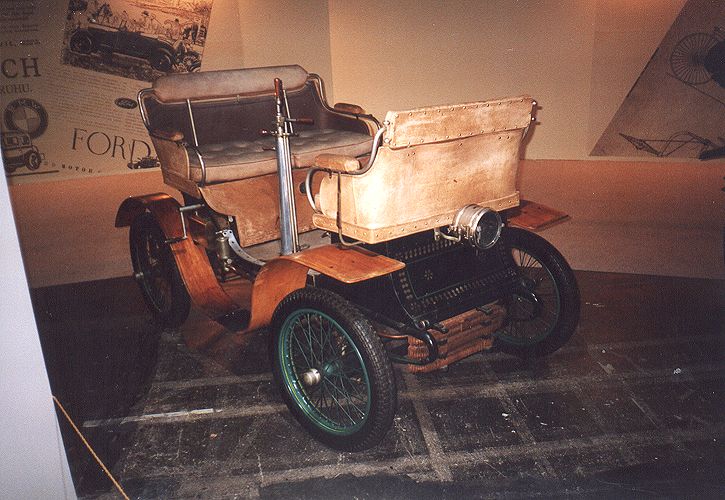Description
The De Dion-Bouton Type D was one of the earliest production automobiles from the pioneering French manufacturer De Dion-Bouton. Introduced in 1901, it marked a significant step forward in the evolution of the motor car, offering increased performance, improved mechanical reliability, and greater practicality than many of its contemporaries.
This model was part of De Dion-Bouton’s popular early lineup of light vehicles aimed at the growing market of private motor car ownership. The Type D retained much of the visual and structural influence of horse-drawn carriages, featuring large spoked wheels, an open body, and a high seating position. It was typically produced in a vis-à-vis configuration, meaning passengers sat facing one another — a layout inherited from earlier carriages and quite popular in the first generation of motor cars.
Powering the Type D was a single-cylinder, air-cooled De Dion-Bouton engine, mounted at the rear of the car. This engine had a displacement of approximately 402 cc and developed between 3.5 and 4.5 horsepower, depending on the specification. De Dion-Bouton engines of this era were highly regarded for their advanced design, including mechanical inlet valves and high-revving capabilities, offering smoother operation and better reliability than many rival designs.
Drive was transmitted through a two-speed gearbox and chain final drive to the rear wheels. The gearbox was operated manually, and gear changes were made via a lever placed near the driver’s seat. Steering was managed using a tiller rather than a wheel, typical of the time. The suspension system consisted of semi-elliptic leaf springs, providing a relatively compliant ride for a vehicle of such primitive design. Braking was limited to a mechanical system acting on the rear wheels or sometimes the transmission.
The Type D had a simple but elegantly crafted body, often finished with polished wood panels, brass fittings, and buttoned leather upholstery. It was lightweight and nimble by early automobile standards and was well-suited to city and countryside driving alike. Its ease of operation and mechanical durability helped it gain popularity with early motorists.
The Type D was part of the reason De Dion-Bouton became the world’s largest automobile manufacturer at the turn of the 20th century. The company’s innovation, particularly in engine design, was so influential that De Dion engines were licensed and copied by dozens of other early manufacturers across Europe and North America.
Today, surviving examples of the De Dion-Bouton Type D are prized by collectors and vintage motoring enthusiasts. They are frequently seen in early car events and veteran rallies such as the London to Brighton Veteran Car Run, where they continue to demonstrate the elegance and mechanical ingenuity of the earliest motor vehicles.
